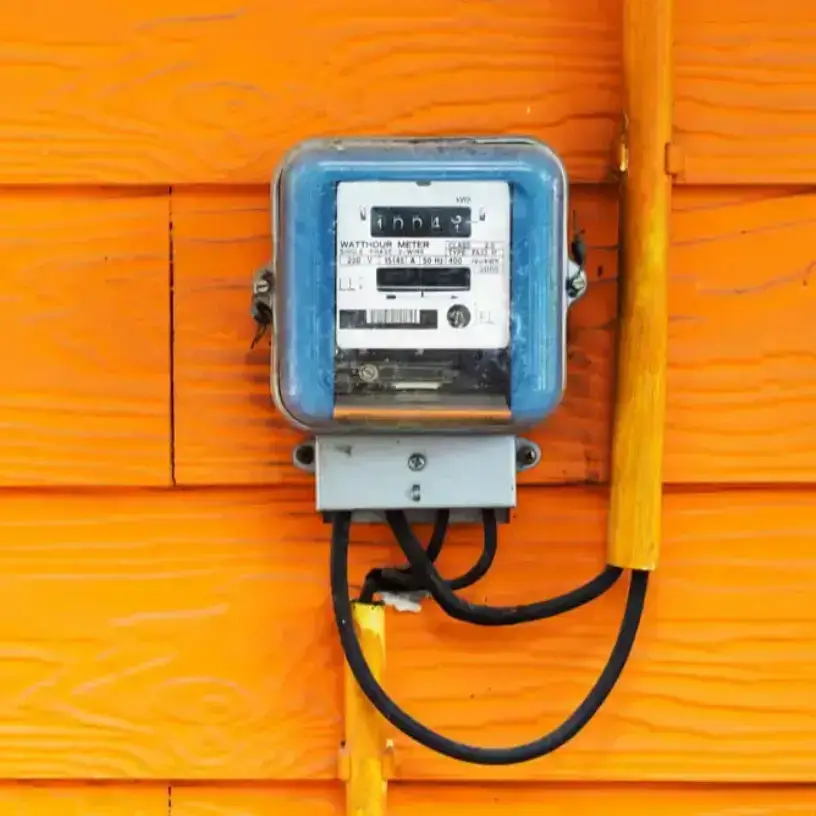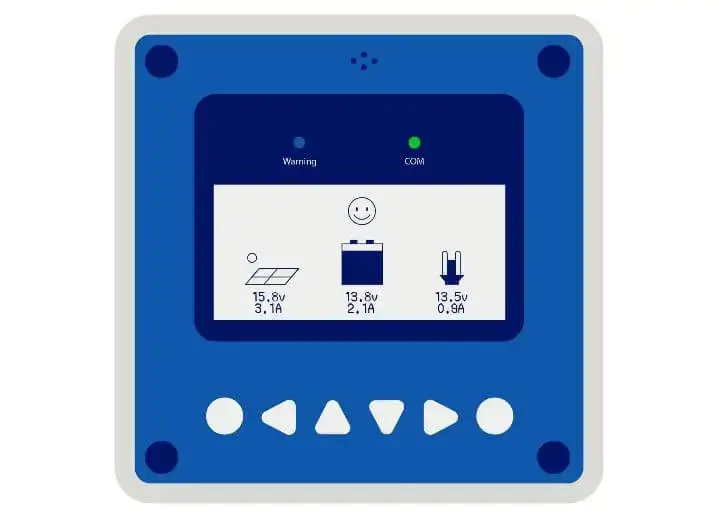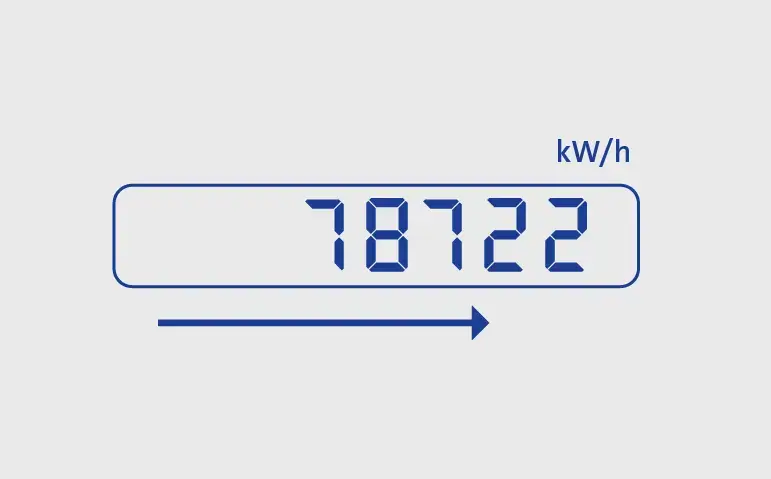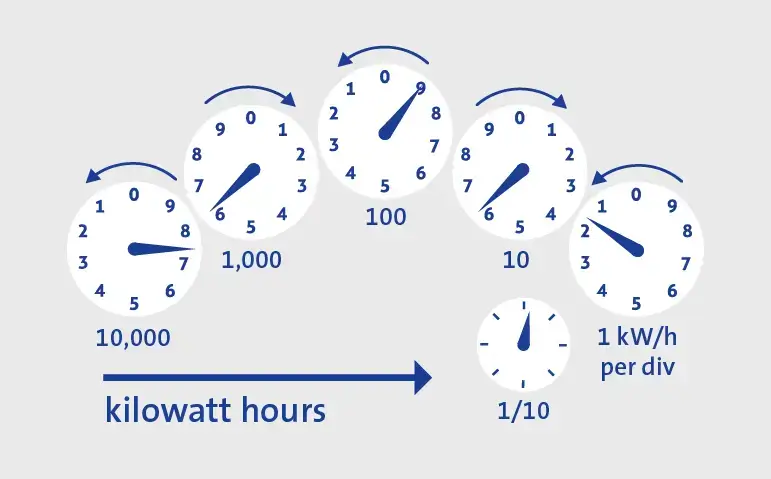Home / Compare Electricity &… / Understanding your elect…
Understanding your electricity meter






Key takeaways
- Every home connected to the electricity grid will have its own meter that’s used to track the amount of electricity a household uses.
- The type of electricity meter you have may depend on where you live and how old your house is.
- Your meter will either be digital or analogue, which will affect how you read the meter.
What is an electricity meter?
An electricity meter measures the electricity use of your household or business within a billing period. All electricity meters will have a meter number and a National Meter Identifier (NMI) that is used to identify your property. Your energy usage data is recorded from the meter either manually or digitally and sent to the electricity retailer that provides your electricity bill.
Understanding how your meter works can help you monitor your energy usage and prepare for your next bill.
Keep in mind that electricity and gas are recorded separately, so learn about reading your gas meter here.
Types of electricity meters in Australia
There are several different types of electricity meters. While these all measure your electricity consumption, the newer models (i.e. smart electricity meters and solar meters) are more advanced and may help you identify potential savings.
Electricity flat-rate meters
Also known as an accumulation meter, this meter will record how much electricity you use in kilowatt-hours (kWh). As an older model, the only way to check how much electricity you’ve used within a specific period is to manually compare the numbers between two consecutive readings. These meters come in three types: cyclometer display, digital display and dial display.
For instance, if your meter reads 345 kWh in the morning (shown below on a cyclometer display) and then 386 kWh the following morning, you’ve used 41 kWh in a 24-hour period.
Electricity interval meters
The electricity interval meter is an advanced version of the flat-rate meter. It records your energy use electronically in either 15- or 30-minute intervals. With an interval meter, you can be alternatively charged using a time-of-use (TOU) or ‘flexible use’ tariff, meaning you’re charged at different electricity rates depending on the time of day. However, it still requires a meter reader to come to your home and take the readings.
Smart electricity meters
Also known as an advanced meter, a smart meter records your energy usage in real time. It’s similar to an interval meter; however, the data is collected remotely and doesn’t require a meter reader. If your property doesn’t have a smart meter, you may be able to upgrade, but you may need to pay an electric meter installation cost.
This type of meter is ideal for those on a time-of-use tariff because TOU rates will vary throughout the day depending on when you use electricity.
You can read your smart meter remotely through an app on your mobile phone instead of going to your meter box to get a reading; your retailer usually provides this through their online services. By being able to monitor when there’s high energy consumption in your home, you can observe your energy habits and adjust them to reduce your consumption during peak charging times.
Without a smart meter, you may still be able to track your energy usage with an electricity monitoring device.
Solar meter
 If your home has a solar PV system or solar battery, you’ll have a solar meter (also known as a net meter) to help you read how much energy your household consumes. A solar meter tracks the imported electricity for your household and exported solar power to the grid. Additionally, depending on your solar meter type, it can help you see how much excess energy your system generates.
If your home has a solar PV system or solar battery, you’ll have a solar meter (also known as a net meter) to help you read how much energy your household consumes. A solar meter tracks the imported electricity for your household and exported solar power to the grid. Additionally, depending on your solar meter type, it can help you see how much excess energy your system generates.
By tracking the excess energy production from your solar panels, you can calculate how many kilowatts (kW) you’re selling back to the grid. The amount you make from the excess energy is referred to as feed-in-tariff credits, and you can receive these credits at the end of each billing period. When comparing energy retailers, you can also compare solar feed-in-tariffs.
How to read an electricity meter
You may have either a digital or analogue electricity meter. Digital meters are straightforward in showing how many kilowatts your household has consumed in a certain period. The below image shows a reading of 78,722 kWh.

If you have an analogue electricity meter, it will have multiple dials that look similar to a clock face. Each dial represents a digit in your reading.

More on electricity meters
Where is my electricity meter?
Your distributor or meter provider will typically install your meter on the side or front of your home in a safe and easily accessible area so they can conduct meter reads. Depending on when your home was built, some providers will install it inside, so you’ll need to be home for them to access your meter.
Electricity meters are installed by a qualified and licensed electrician when a house is first built. However, if you upgrade your meter, your old meter may be removed by the installer and returned to your electricity distributor or simply disconnected from the grid.
Your energy retailer is responsible for meter installations, upgrades to a smart meter and internal repairs and replacements. You may incur an out-of-pocket fee if the work is outside of the standard maintenance requirements for that meter, such as a voluntary meter upgrade.
Where do I find my NMI number on my meter?
Your NMI is different to your meter number (which can be found on the meter itself). Instead, the easiest way to find your NMI is to check your electricity bill for your property; it can usually be found near the top of the first or second page of your bill. Your NMI will be 11 numbers in most states except Queensland (where it will be 2 letters, followed by 9 numbers).
If you’re new to a property and haven’t received a bill yet, you could contact your electricity retailer for the information.
Who takes my meter reading?
Your energy distributor takes a reading and sends it to your retailer, who will calculate the electricity bill. Distributors are required to take a reading at least once a year. If your meter reader can’t access your meter for any reason, you may receive an estimated bill rather than an actual one.
An estimated read is based on past meter reads and is used when an actual read isn’t available. An actual read may not be available for a number of reasons, including:
- If your distributor isn’t able to access your meter
- If your meter isn’t able to send your meter data to your retailer in time for the next billing.
How to fix a faulty electricity meter in Australia
If you think that your electricity meter is broken or defective, you can request for your retailer to test the meter. If they find an issue, they’ll replace the meter on your behalf. However, if there are no issues with your meter, you might be charged a fee for the test.
How can an electricity meter help me be more energy efficient?
If you have a smart meter, it could help improve your energy efficiency by:
- Giving you round-the-clock access to your electricity usage so you can see when you use it most.
- Allow you to identify trends in your electricity usage and potentially re-evaluate your energy habits to decrease your energy consumption, which may lower your bills.
- If suitable to your circumstances, you could switch to a time of use tariff and shift your use of energy-heavy appliances to off-peak charging periods.
Meet our Head of Energy, Meredith O’Brien
As the Head of Energy at Compare the Market, Meredith O’Brien believes in educating Australian customers about the everchanging gas and electricity market so they can adjust their energy usage habits and get the most out of their energy plans.
Meredith has six years within the energy industry, following 15 years of experience in financial services and is currently studying a Master of Business Administration. Meredith is a dedicated customer advocate who is passionate about empowering Australians to find the right products to suit their needs by removing the confusion from comparing.